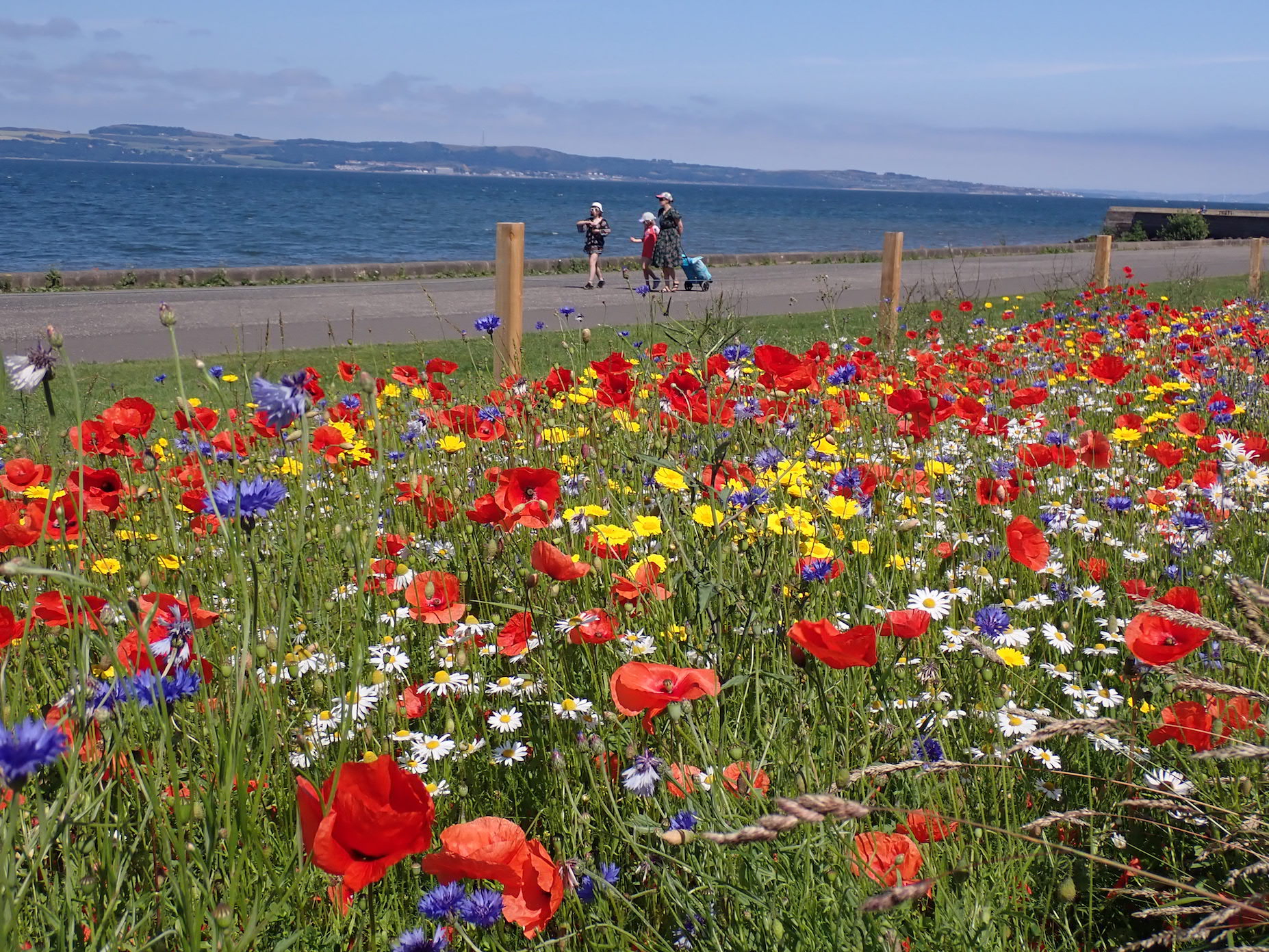Edinburgh Wild Line
Overview of project:
Wild Line is an Edinburgh Shoreline project which creates or improves large scale habitats for coastal wildlife.
Led by the Royal Botanic Garden Edinburgh in partnership with the University of Edinburgh, City of Edinburgh Council, University of Glasgow, Scottish Seabird Centre and the local community network, the project has created a series of eight wildflower meadows along Edinburgh’s north coastline by Cramond Foreshore and Gypsy Brae by Granton.
Nectar and pollen-rich native wildflower plants, such as daisies, poppies and cornflowers along with perennial grass species help support insect pollinators and seed-feeding birds.
Concrete eco-tiles along the hard seawalls also give homes to rocky shore invertebrates. Non-native plant species and marine plastic from key Forth islands and coastal sites have also been removed, to help improve the sites for nesting seabirds.
The wildflower meadows also add bright colour to the local area and create a sense of wild space in Edinburgh and a place for people to enjoy. The planted seed mix contains many long-lived species, and will provide a palette of food-rich flowers through the seasons for years to come.
Measuring the impact of the project
As part of the Wild Line project, the team are monitoring the impact the new or improved habitats are having on coastal wildlife.
The wildflower meadows were sown shortly before the project officially ended in March 2021, so most of the survey work in the rest of this year and through a total of ten years will be led by Prof. Graham Stone at the University of Edinburgh, The CEC greenspace team and volunteer surveyors.
It is already clear that while the existing grasslands on the Cramond foreshore are rich in flowers in the spring, the planted wildflower meadows provide far more nectar and pollen for the rest of the year and are visited by a rich diversity of bees, hoverflies and butterflies.
There is already evidence that the eco-tiles are providing a habitat for seaweeds, barnacles and limpets, and continued monitoring will provide data to aid evidence-based conservation planning in urban areas.
More information: https://edinburghshoreline.org.uk/the-wild-line/




